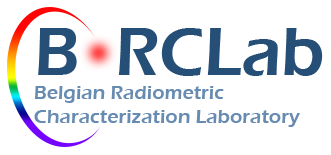INSPIRE-SAT 7
The mission
INSPIRE-SAT 7 is a 2-Unit French CubeSat, part of the International Satellite Program In Research and Education (INSPIRE) mission, primarily designed for Earth and Sun observations. It will contribute for in-orbit study of the Sun irradiance and the Earth’s Radiation Budget (ERB). ERB describes the different types of energy fluxes that reach or leave the Earth’s atmosphere and biosphere. It is affected by climate change through the variability of surface albedo, trace species abundances, cloudiness and aerosols, and the variability of the solar irradiance. Therefore, ERB presents an Earth Energy Imbalance (EEI) which is a crucial quantity corresponding to the excess of energy stored in the climate system. Consequently, it must be accurately measured, preferably from space, for the validation of climate models and the prediction of global warming.
The ultimate goal of the project is to develop a constellation of CubeSat for ERB, climate change, and Sun-Earth studies. This satellite is a first step in the deployment of the so-called ‘Terra-F’ constellation. The Laboratoire ATmosphère, Milieux, Observations Spatiales (LATMOS, France) is the lead institute of this CubeSat, with the support of CNES.
Instrumentation
In addition to space weather studies and technology demonstrations, INSPIRE-SAT 7 integrates miniaturized sensors on all sides of the CubeSat, combining narrow and wide field of view. They are designed to measure Earth’s energy budget components from space to sustain climate research studies.
- Total Solar Irradiance (TSI) sensors (TSIS payload)
Four Silicon photodiodes are used to measure TSI between 200 nm and 1100 nm. TSI is a key parameter to measure since it drives the Earth’s climate system. The potential effect of its variability for the climate remains of great scientific importance.
- Earth Radiative Sensors (ERS) for ERB measurements
Twelve miniaturized thermopiles monitor the incoming shortwave solar irradiance (OSR) partly reflected by the atmosphere (clouds, aerosols) and Earth’s surface, and long-wave radiation (OLR) emitted by the Earth’s surface and atmospheric components such as greenhouse gases and clouds. Six sensors are covered with carbon nanotubes, while the others are covered with optical solar reflector. In addition, ERS sensors are coupled to temperature sensors to measure their interface temperature at high accuracy.
- UV sensors (UVS payload)
Four UV sensors are used for solar UV SSI measurement around 220 nm to better understand the response of stratospheric ozone to UV SSI changes. This new generation of solar blind detectors will monitor the integrated SSI and its variability in the Hertzberg continuum (200 nm – 250 nm).
- Ozone sensors (OS payload)
Ozone sensors are based on silicon photodiodes coupled to interferential filters. Six sensors are centered on a wavelength sensitive to ozone absorption (308 nm, bandwidth of 10 nm) and insensitive (340 nm, bandwidth of 5 nm).
BIRA-IASB contribution
The LATMOS offers the opportunity for BIRA-IASB to be part of their consortium. The main role of BIRA-IASB, with the support of BELSPO and the PRODEX Office (ESA) is to use its radiometric laboratory (B.RCLab) for the radiometric characterization and absolute calibration of the following payloads: UVS, TSIS, OS and ERS. In addition, the BIRA-IASB will be involved in the commissioning phase to check the responsivity in orbit and to process the first scientific data.
B.RCLab will perform a full radiometric characterization of the sensors coupled to absolute calibration when required, using secondary standards of spectral irradiance. Characterizations will consist in:
- Spectral Response Function (SRF) measurements to determine how a continuum light source is weighted by a sensor response.
- Inverse square law verification (mandatory for payloads designed to measure wavelength integrated solar irradiance)
- Contributions for thermal characterization to study the sensor response changes as a function of the temperature, in particular when Si photodiodes are used. The temperature range is -30 °C to +50 °C.
- Angular responses measurements to characterize the angular response of the INSPIRE-SAT 7 payloads up to ~10° of depointing for the data processing of absolute measurements.
- Tests for aging and stability. The potential trend of the sensor performances due to the degradation in the harsh space environment and UV solar irradiance should be assessed, as well as the stability of the sensor responses.
In addition, BIRA-IASB will take part in the commissioning phase that will include the verification of the calibrations, radiometric noise and the stability of the payloads, and the processing of the first scientific data.
Status of the mission
Currently, B.RCLab is preparing, testing and validating its facilities and opto-mechanical benches, which are required for the INSPIRE SAT-7 characterizations. The radiometric tests on whole the satellite (at BIRA-IASB and PTB) are scheduled for the fall 2022.
|
|
 |
|
 |



